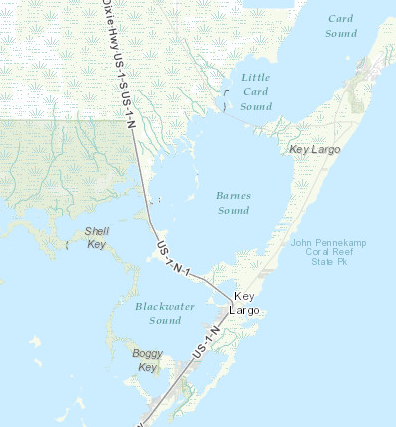As of April 1st, 2021, a new law went into effect regarding Engine Cut Off Switch (ECOS) on boats. So what is an ECOS? It is that lanyard that probably came with your outboard if it was made any time recently. It attaches to the helms-person and the motor. In general, it looks something like this:
They also make electronic ones that you attach to you or your PFD that will kill the motor if you fall in the water or get separated from the boat, but all the ones I saw were pretty expensive and really designed for bigger boats where the crew might not notice that someone went overboard.
Here is how the actual law reads:
SEC. 8316. ENGINE CUT-OFF SWITCHES; USE REQUIREMENT.
(a) IN GENERAL.—Section 4312 of title 46, United States Code, is amended—
(1) by redesignating subsections (b), (c), and (d) as subsections (c), (d), and (e), respectively;
and
(2) by inserting after subsection (a) the following:
``(b) USE REQUIREMENT.—
``(1) IN GENERAL.—An individual operating a covered recreational vessel shall use an engine
cut-off switch link while operating on plane or above displacement speed.
``(2) EXCEPTIONS.—The requirement under paragraph (1) shall not apply if—
``(A) the main helm of the covered vessel is installed within an enclosed cabin; or
``(B) the vessel does not have an engine cut-off switch and is not required to have one under
subsection (a).’’.
(b) CIVIL PENALTY.—Section 4311 of title 46, United States Code, is amended by—
(1) redesignating subsections (c), (d), (e), (f), and (g) as subsections (d), (e), (f), (g),
and (h), respectively; and
(2) inserting after subsection (b) the following:
``(c) A person violating section 4312(b) of this title is liable to the United States Government
for a civil penalty of not more than—
``(1) $100 for the first offense;
``(2) $250 for the second offense; and
``(3) $500 for any subsequent offense.’’.
(c) EFFECTIVE DATE.—The amendments made in subsections (a) and (b) shall take effect 90 days after
the date of the enactment of this section, unless the Commandant, prior to the date that is 90
days after the date of the enactment of this section, determines that the use requirement
enacted in subsection (a) would not promote recreational boating safety.
I'm not a lawyer but after parsing through a bunch of the law and various other sites on this, here is my understanding of what this means for our Catalina 22. It doesn't apply to boats 26 feet or longer or if the helm is enclosed in a cabin. That doesn't rule out the Catalina 22. The critical passage in there for the Catalina 22 is "while operating on plane or above displacement speed". In general, sailboats just don't get on plane (okay, some of those America's Cup ones do, but we aren't talking about low-flying wind-powered airplanes). It also doesn't apply if your boat or motor didn't come with an ECOS (ours did). Here is what the Coast Guard FAQ says about being "on plane": "Sailing vessels are generally not capable of getting 'on plane' because of their displacement hull, whereas a ski boat, bass boat or runabout can usually achieve planing with little effort."
What does "or above displacement speed" mean? Well, the displacement speed provided by this formula:
The LWL is the Length at Water Line in feet. On a 1985 Catalina 22, the LWL is 19'4" or 19.33 feet, so the displacement speed is 5.93 knots. So this rule could apply if we are under motor moving faster than 5.93 knots, which theoretically could happen if we are moving at full speed with a tide in our favor. If your boat has a ECOS (which are required on all new boats and motors) and you are under motor moving faster than 5.93 knots (for a Catalina 22), you should have that ECOS attached to both you and the switch. This is pretty infrequent, so just make sure you have the cord nearby.
The more likely place that a sailor will run into trouble with the rule is on their dinghy. Some dinghies definitely can get on plane, and that's where you can get into trouble for not having a ECOS.
In general, besides the rules, just don't be stupid about it. Use one where a kill switch makes sense. Your chances of getting stopped by the Coast Guard are low. The most likely place you will run into trouble is if you fall into the water and your boat smashes into something else or comes around and runs you over. Then they will likely fine you on top of your other problems. These rules are there to codify common sense, which some boaters just don't seem to have.









